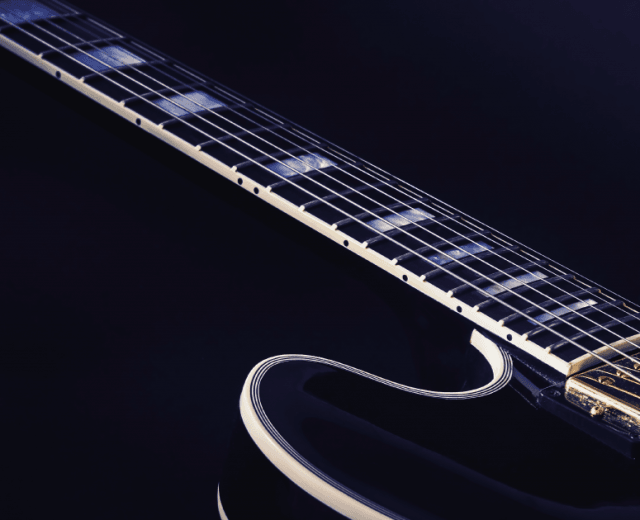1 – WHAT IS THE TRUSS-ROD?
Different kinds of necks and
truss-rods in electric and acoustic guitars.
In this article you will find
some historical notes and a lot of information about your guitar neck, its relationship
with the strings and the truss-rod function:
- What is the purpose of a truss-rod
- Typology of guitar necks
- Early truss-rods
- Typology of truss-rods
- Truss-rod adjustment points
Why are guitar necks equipped
with a truss-rod?
As we know, the necks of electric guitars, steel string acoustics and today,
sometimes, even nylon string classical guitars are fitted with a rod inside the neck. Adjusting this truss-rod
allows us to fix a neck tendency to assume an excessively curved pattern,
concave with respect to the straight line of strings between the nut and the
bridge, distancing from or approaching to them in the central portion.
These variations can be due to
changes in climatic conditions of the room the guitar is in. Dry cold or
excessive humidity do not favour neck stability. For this reason it would be
advisable not to leave the guitar near a source of heat or steam, nor hanging
on a room wall that is in contact with the outside.
This can seem to be an excessive
care, but you have to think that our guitar neck is not in a rest position: it
is always working. A common light set of strings for classic guitar exerts a tension on the instrument of about
6-7 kg per string, increasing from 6th to 1st string. In a steel string
.010-.046 set (light) for electric guitar, tensions vary from about 6 to over
10 kg per string. A set for acoustic folk guitar .013-.056 (medium) can exceed
80 kg of total tension!
Applied pull varies according to string
gauge, material and mass, as well as instrument scale and tuning. The very same plain string has two different draws if used, by
example, as a G or a B. The same string put on a 24” ¾ scale guitar has a lower
draw compared to a 25” ½ scale one.
Different kinds of neck
It is therefore clear that the
neck of our in-tune guitar is a potentially stressed part right from the start.
Fortunately Mother Nature provided us wood, a strong, durable and
elastic material if it is a high grade choice, well seasoned and treated.
Theoretically, a neck made of suitably lengthwise arranged laminated wood
should be steadier than a single piece neck. In the same way, a maple
neck with a glued on maple fretboard should be steadier than a real maple-neck,
entirely obtained from a single maple board. Actually this is not always true;
there is a remarkable variability due to species, quality, natural or
artificial ageing and manufacture.
Artificial ageing in industrial
ovens once, and high temperature roasting method nowadays has enabled residual humidity removal from wood,
improving neck stability without having to wait years of natural seasoning.
(For instance, renowned luthier James D'Aquisto used to work with 9 to 12 year
seasoned wood).
Over the years several builders
have also been trying to offer rock-solid necks made of synthetic materials,
and some of them are very interesting.
Early truss-rods
In the
beginning, guitar necks had not an adjustable truss-rod, because
strings were made of gut and silk, and there was little draw on guitars (nylon
arrived in 1948). In the early '900s steel strings made up and things
changed, though not that much after all. Consider that Martin Guitars did not
care about this matter for its acoustic guitars – long since equipped with
solid X-bracing tops – until the '20s, when a simple ebony bar
was put inside their necks.
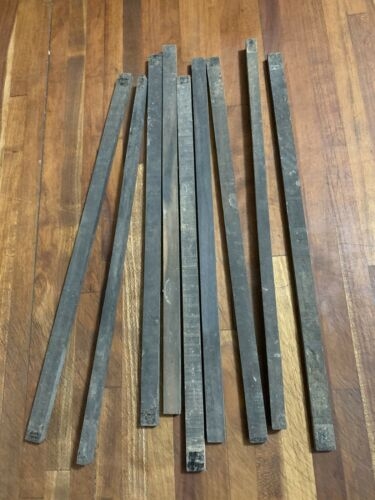
Around the mid
'60s a solid steel T-bar and later a square-bar were
adopted. They were not adjustable, so the builder was certain of its neck
quality! In 1985 Martin finally gave in to the novelty represented by
the adjustable truss-rod Gibson patented and permanently introduced in 1923!
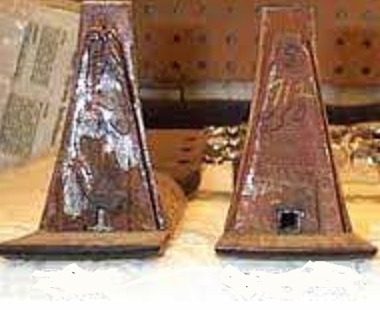 (Martin trusses till 1985)
(Martin trusses till 1985)
Different kinds of truss-rod
The simplest
and most popular adjustable truss-rod is the single action one, that
fixes neck forward bending (concavity). A metal bar is put inside a
curved channel cut along the neck. The bar can be adjusted tightening a bolt at
one end of it. Bar resulting movement counteracts string tension if the neck
has been stressed until it bows and becomes concave.
Another kind of
adjustable truss-rod is the double action or two way one. It
consists of two bars inserted in a straight channel and allows to fix an
excessive concavity as well as an eventual convexity (backwards
bow). This latter situation is a difficult one to solve and somewhat unnatural
for a good neck, unless it has faced a particular stress. The double action
truss-rod is less appreciated and popular than the single action because many
musicians complain a bad influence on sound due to its major metal mass,
though there are some single rod models such as the Fender Bi-Flex.
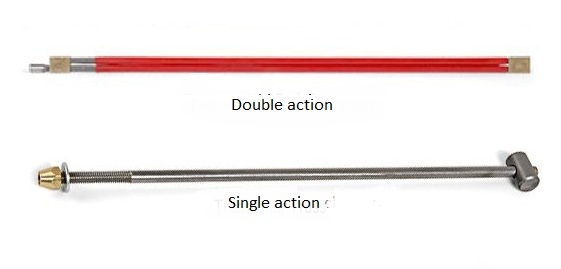
Other
solutions seen over the decades are the double single-action truss-rods by
Rickenbacker and Guild (12 string), designed for extra strenght and separate adjustment
of wound string and plain string sides of the neck.
Adjusting points of a truss-rod
The access to
a truss-rod adjusting point can be at the neck basis (by example, in vintage
Fenders; in this case the neck must be removed to show the access) or on the
headstock, behind the nut (Stratocaster® replicas, Les Paul® inspired guitars, and so on). Sometimes alternative solutions were offered, such as at
the neck heel low side (Yamaha RGX TT) or under peculiar shape
headstocks (Parker Fly).
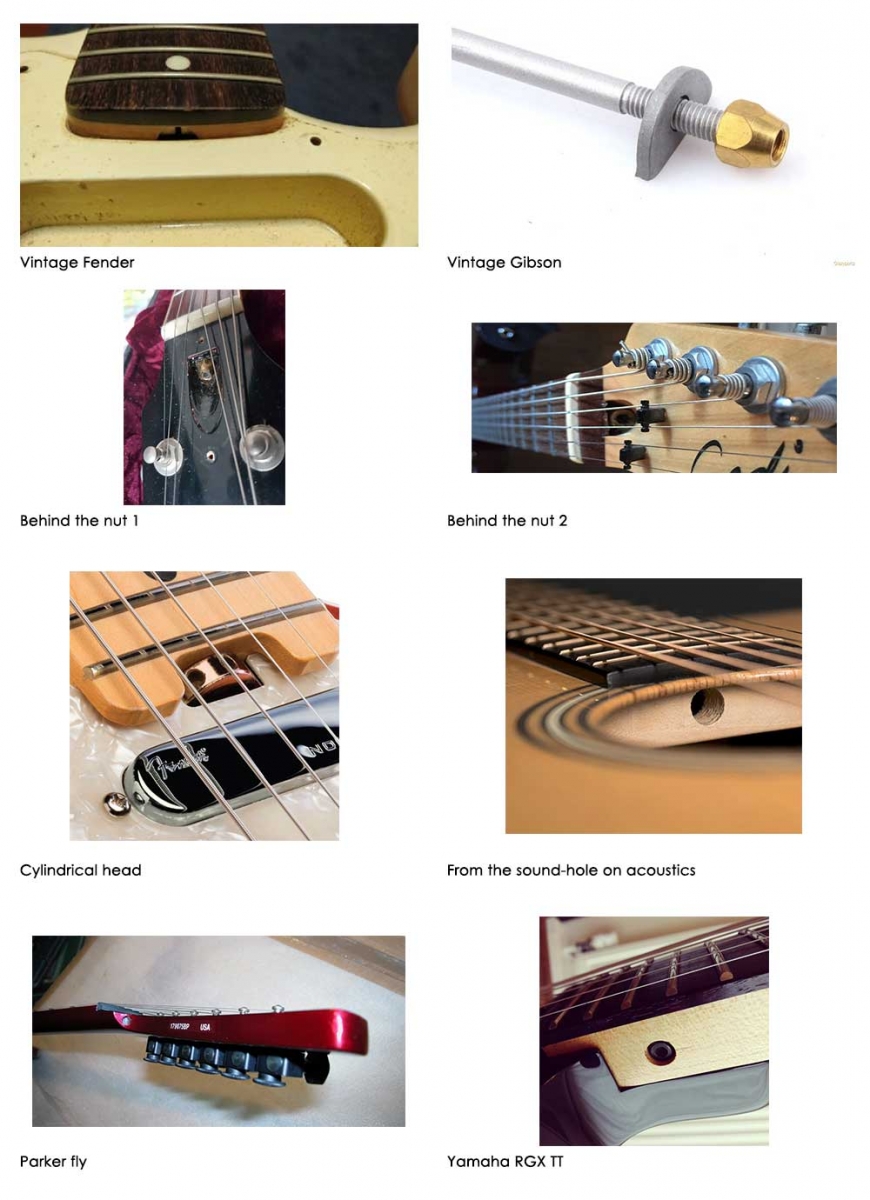
Generally the
adjusting point is the rod threaded end with a Phillips, hex, barrel or Allen
head. In any case, having the right wrench is always advisable, whether
it has a metric (European and Asian productions) or Anglo-Saxon pitch
(USA productions), in order to avoid damages to this essential part of our
guitar.
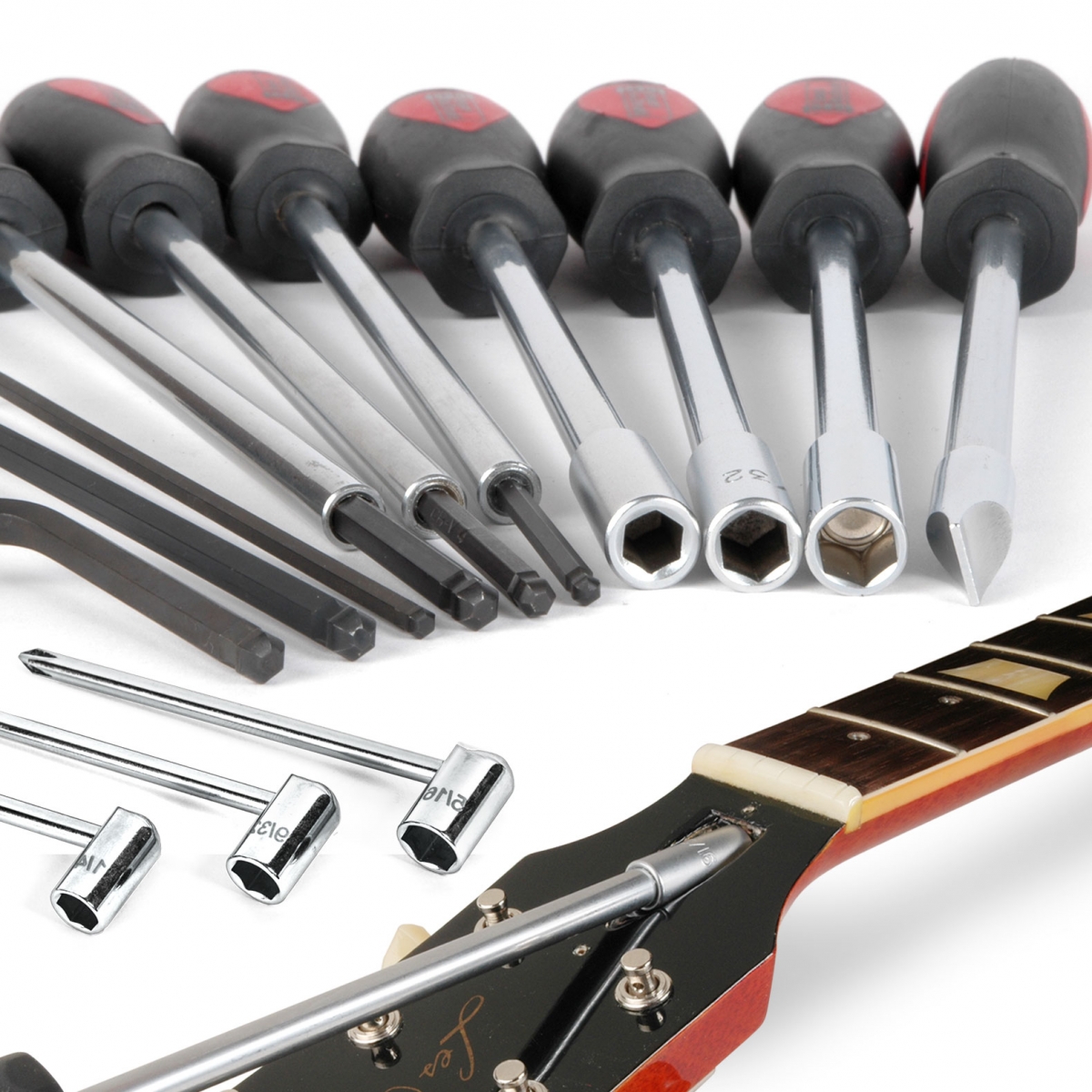
Well, we know
enough now to make our first neck adjustment. A new article will deal
with the evaluation of string-fret gap, recommended specs and
truss-rod adjustment!
Fabrizio Dadò
References
https://tension.stringjoy.com/
https://www.daddario.com/globalassets/pdfs/accesso...
